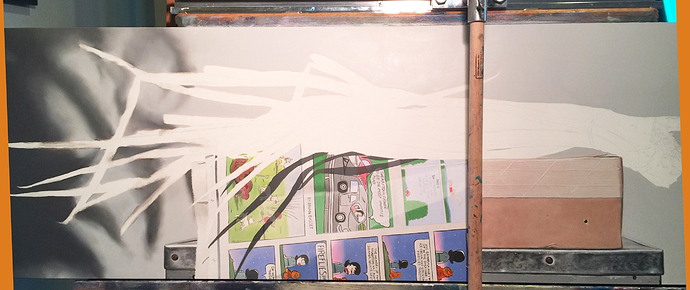Many of us have read about the potential changes we might observe when oil paint dries. Dry oil paints can appear to darken or lighten depending on everything from the absorbancy of the ground (sinking) to the quality of light found where the painting is displayed or stored. The general understanding regarding the later is that dry oil colors in a painting take on color in the dark, and bleach back out in the light. For more on the impact of light on oil colors:
and: Effects of Light Exposure
However, a different phenomenon has recently been making the rounds in some online material forums that has been dubbed “voodoo darkening.” The issue is described as an unexplained significant value change (although mostly darkening) in drying or dry oil paint. It is not a new problem according to many speaking on the issue online, but rather seems to be an issue that has recently caught traction on a few forums as of late. The issue does not seem to be fully attributable to the aforementioned sinking or lighting, but MAY still be related in some way as material gurus like Natural Pigment George O’Hanlon continue to gather data. In an early addressing of an array of questions on this topic, George writes on his Facebook Painting Best Practices page “There is no one culprit in this phenomenon so testing is very difficult.”
However artist Julie Beck from ARA Boston wasted no time and has been doing some informal testing of her own to further explore the phenomenon. She shared the following results online:
Test Panel while wet, all matched exactly to Munsell neutrals. RGH and Winsor Newton on this panel (WN also contains zinc). Painted both thinly and thickly in each patchDried paint swatches (not sunken in) with fresh tubed paint painted on the bottom half of each square. You can see that the wet paint is lighter on most of these swatches. The Winsor Newton is top row and the RGH is lower row. Summary so far: The thinner it was painted, the darker it dries.
Close up of wet and dry paints
Close up of wet and dry paints
This phenomenon, according to online reports and statements, is not limited to any one paint brand or medium. However, many have claimed a strong increase in occurrence when Titanium White is involved. However, fewer report an issue with pure titanium and report that only mixtures seem to produce a value shift. (In fairness though, it would likely seem that pure white shifts would be far less perceptually noticeable.)
Our own @dianedavichcraig had a engagement with this phenomenon recently and was kind enough to record and share her experience:
Layer one of gray paint straight from the tube of Williamsburg Neutral Gray No 8. Composition: PW6 Titanium Dioxide Rutile, PBK6 Nearly Pure Amorphous Carbon, PY13 Hydrated Iron Oxide, PR102 Calcined Natural Iron Oxide. Plus Old Masters Italian Wax Medium ( Maroger Medium) Painted on Ampersand Gessoboard. Layer 1 of gray paint straight from the tube. No problem appeared when I first put down the paint.
Problem developed of a darker gray stripe right over the onions. Beginnings showing here after putting in the onions and second layer of gray.
After covering the dark spot in farther left and farther right spots then a darker spot appeared in the middle parts lacking the touch up (didn’t look like it needed a touch up when touch up was done.)
Then after going over entire gray again (everything from top of the board to the onions) a lighter stripe appeared (hard to see in this photo but it was there) and it was showing up in addition to the darker stripe still evident (but not as much). And it had a slicker texture.
Then as I was oiling out with a makeup sponge I nicked the paint in 2 spots with my fingernail! (No words I can print here) So I slightly sanded and filled in the small nicks.
Finally after one more coat only over the stripes, nicks and slickness it resolved.
Finished piece! Frustration Factor 8 out of 10. (Scale: 1 being adding a happy white highlight dot and 10 being painting a dollar bill.)
I will be sure to update this article is more information is brought to light. Please let us know if you have any experiences regarding this phenomenon to share below!
3-23-21 Update: Colleague @Maneesh_Yadav has presented a promising line of investigation on this topic. Read about his effort to explain this phenomenon here:











